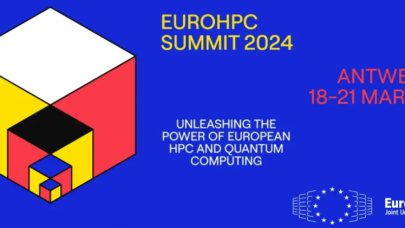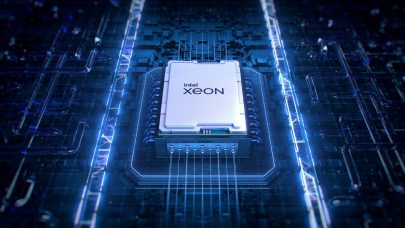A lot can change in ten years. We might move houses or change jobs. Our kids get older (and so do we). If we’re lucky we make new friends, and we’re sad when old ones pass into memory. There are some things we hold onto—our core values, our driving passions—and over ten years, we hope to see progress toward our goals, so that when we look back on a decade, we see how far we’ve come.
This is our tenth Supercomputing Conference since starting Intersect360 Research in January 2007 (as Tabor Research then, a division of Tabor Communications), and it’s been a decade of change. It’s hard to think of industries that evolve as rapidly as HPC. Most other advancements you’d think of—in scientific research, manufacturing, electronics, entertainment, transportation—have ties to HPC. Year by year, HPC influences the arc of change in our lives.
As part of a retrospective on our ten years as HPC analysts, I reviewed what the industry looked like when we began, along with the predictions we made along the way. Ten years ago, our industry looked a lot different.
- Beowulf-style x86 clusters were the dominant paradigm, and blade form factors were about to take off, but Intel was not the number-one processor vendor for HPC clusters in 2006. (It was AMD.)
- Grid computing was still a common topic, and cloud computing had not yet taken hold.
- The U.S. was indisputably the leader in supercomputing. The BlueGene/L system at Lawrence Livermore National Laboratories was in the middle of its streak of number-one rankings on the TOP500 list, having recently doubled in capacity to 136 teraflops.
- InfiniBand overtook all other non-Ethernet interconnects for the first time, with Mellanox as the only silicon provider. (QLogic announced its entrance two years later, at SC08.)
- Parallel file systems were uncommon, though in 2007 Panasas would begin a major campaign around pNFS, and Sun Microsystems acquired Cluster File Systems, Inc., which owned Lustre. IBM had GPFS but had not yet acquired Platform Computing.
- Most importantly, it was the dawn of the multicore era. AMD, IBM, and Intel were all shipping dual-core CPUs, with roadmaps leading to four, eight, and more. This would prove to be the most definitive shift that changed the face of HPC.
 It was into this industry landscape that we brought our new HPC analyst company. We founded Intersect360 Research (as Tabor Research then) with an eye on doing something different, relying primarily on forward-looking surveys of the broad HPC community to drive a better understanding of future trends.
It was into this industry landscape that we brought our new HPC analyst company. We founded Intersect360 Research (as Tabor Research then) with an eye on doing something different, relying primarily on forward-looking surveys of the broad HPC community to drive a better understanding of future trends.
Furthermore, we strove to be inclusive of non-traditional use cases of HPC in business, calling it “Edge HPC” in 2007 before later changing its name to “High Performance Business Computing,” the nomenclature we still use today. As part of that effort, we identified financial services as one of the largest commercial vertical markets for HPC. And another segment proved controversial, as we also counted what we then called “ultrascale internet” as a consumer of HPC technologies. Today we still track this segment, but it is modernly called “hyperscale,” and it has grown and evolved into its own market, adjacent to HPC but not part of it.
That early recognition of the hyperscale market is far from the only future-looking insight we had. In 2007, we published research that predicted that business applications would drive the growth in the HPC industry, which they have. (Finance is still a top segment, and all commercial markets have been growing.) We also said that year that grappling with large amounts of data the need for systems focused on data management. Okay, we didn’t call it “Big Data” at the time, but the trend was there.
And that transition to multicore? We saw what that was doing too. We predicted it would lead to power consumption as a top-tier consideration, and that there would be an increased investment in middleware. We said in 2007 that GPUs would become a predominant accelerator architecture, beginning at the entry-level and working their way up in scale. And we perceived a growing gap between delivered and actual performance.
We thought at the time that this would lead the industry to beginning to devalue raw metrics of performance, such as flops, in favor of truer productivity metrics, and we even used the term “High Productivity Computing” for a while. That’s one we got wrong, at least as far as the last ten years is concerned, though we do hear talk now of “Exascale” rather than “Exaflops,” a tentative step in that direction.
Along the way, there were also the things we said wouldn’t happen. Although Big Data swept through IT, we said the applicability and usage of Hadoop would be limited, and that Hadoop wouldn’t make a big dent in HPC. Bolstered by evidence in our surveys, we also said that HPC would be very slow to adopt public cloud resources. Today, less that 3 percent of HPC spending is in public cloud, though we do now project double-digit growth for the next five years.
The biggest change of all was more recent, when for the last three years we began to recognize the end of the “Beowulf era,” as defined by clusters of similar architecture, where regardless of vendor or form factor, there was simple portability of MPI codes from one system to the next. That has passed, and we now swing back toward an era of specialization, in which end users must select which architectures to optimize for, and they may wind up committed for many years. Furthermore, 88 percent of HPC users say they will support multiple architectures, matching applications to the systems where they run best.
The Decade Ahead
The next 10 years are certain to bring even more change in HPC. At a recent presentation for the HPC Advisory Council, we predicted that specialized, custom architectures will reemerge, that public cloud will remain less than 10 percent of HPC spending, and that object storage will begin to take off in commercial markets.
And the biggest change of all is in evidence this week at SC16. The influence of hyperscale will be felt strongly, in software and middleware (e.g., OpenStack), in system configurations (e.g. Open Compute Project), and most particularly in the hottest new application area: artificial intelligence.
AI (including its other names, like “cognitive computing,” and inclusive of algorithms like machine learning and deep learning) will have a transformative effect on industry and our lives. As with HPC, there are few limits to imagining what can eventually be done with it. And it will drive the use of certain HPC technologies, particularly among the large cloud providers. One difference between AI and HPC is its strong affinity to cloud.
Amongst all this change, a few things will remain the same. The fundamental drivers of the HPC market will remain strong, because there will always be new insights to glean and harder problems to solve. Regardless of any hot, new application areas, there will continue to be a need for good old traditional HPC and supercomputing, until one day we wake up and decide we’ve reached the end of science. And for the next ten years and into the future, Intersect360 Research will remain true to its foundational goal, to deliver critical industry insights, year after year.
About the Author
 Addison Snell is the CEO of Intersect360 Research and a veteran of the high performance computing industry. He launched the company in 2007 as Tabor Research, a division of Tabor Communications, and served as that company’s VP/GM until he and his partner, Christopher Willard, Ph.D., acquired Tabor Research in 2009. During his tenure, Addison has established Intersect360 Research as a premier source of market information, analysis, and consulting.
Addison Snell is the CEO of Intersect360 Research and a veteran of the high performance computing industry. He launched the company in 2007 as Tabor Research, a division of Tabor Communications, and served as that company’s VP/GM until he and his partner, Christopher Willard, Ph.D., acquired Tabor Research in 2009. During his tenure, Addison has established Intersect360 Research as a premier source of market information, analysis, and consulting.




























































